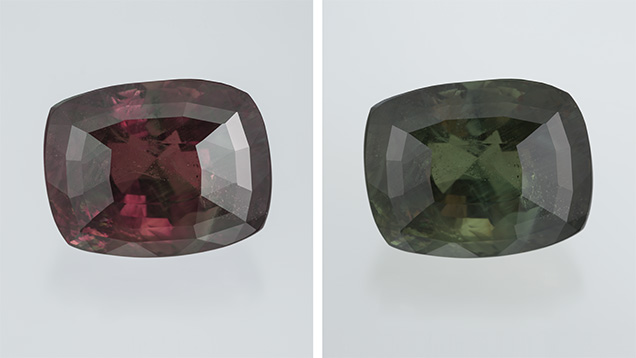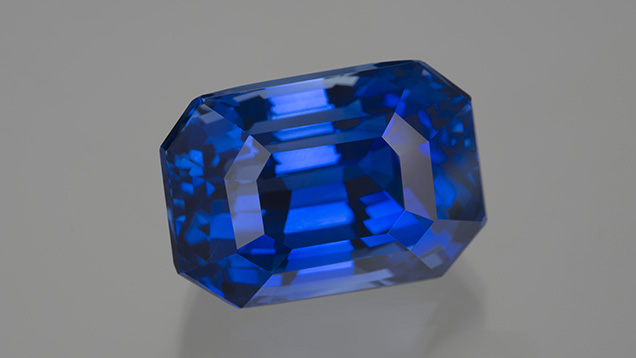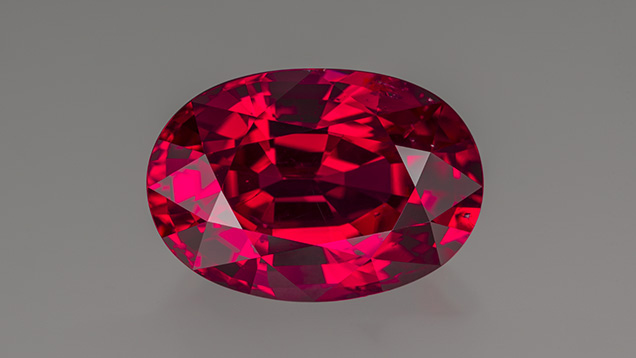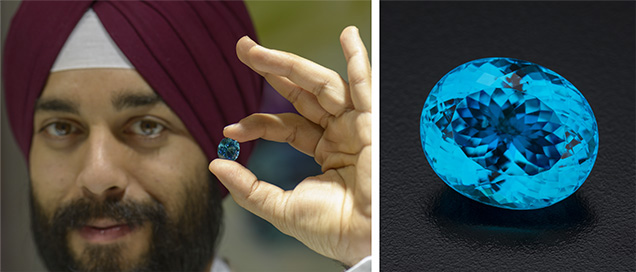Fine Corundum, Paraíba Tourmaline, and Alexandrite – Tucson 2014


Figure 2. This heated 33.16 ct emerald-cut royal blue sapphire is from Sri Lanka. Photo by Robert Weldon; courtesy of B&B Fine Gems.
Also on display was a royal blue emerald-cut Sri Lanka sapphire weighing over 33 ct (figure 2). Bindra noted that supply of fine sapphire, while scarce, is currently stronger than fine ruby. Compared with rubies of equivalent price, fine sapphires offer more size and quality; as a result, prices have risen dramatically over the last two years. This is a function of constricted supply and increasing demand as the Chinese market opens up to premium goods. Only three to five years ago, the strongest demand from Chinese buyers was for mid-range to commercial material. The Chinese are currently consuming the finer items once sought only in Western Europe, the United States, and Japan. As a result, U.S. dealers and consumers have to contend with competition in this market. As Bindra pointed out, this creates “a very interesting dynamic.”
Figure 3. Fine rubies were scarce and expensive at the 2014 Tucson gem show. According to the dealer, this 9.10 ct Mozambique ruby had only undergone low-temperature heating. Photo by Robert Weldon; courtesy of B&B Fine Gems.
Also at the B&B booth was a superb 9 ct Mozambique ruby (figure 3), one of the finest rubies Bindra has seen from this source. He explained that Mozambique’s rubies are so popular because they come in large, strongly colored crystals; once cut, they produce clean, attractive gemstones. They are very marketable because consumers readily appreciate their beauty. Bindra told us that Mozambique ruby crystals can be a little flat, which constrains the depth of fashioned stones. It is difficult to find a piece of rough above 4–5 ct with fine color suitable for cutting a clean gemstone; this makes the 9 ct ruby exceptional. A gem of this quality might sell for US$50,000 per carat or more.By comparison, Burmese rubies are increasingly difficult for domestic dealers to obtain due to the U.S. embargo against Myanmar. Trade is limited to gems that predate the ban and were already in circulation in the United States.

Figure 4. Dave Bindra shows off a superb 14.59 ct oval faceted Brazilian Paraíba tourmaline. Gems of this quality above 1 ct are extremely rare, making this gem exceptional. Photos by Eric Welch (left) and Robert Weldon (right); courtesy of B&B Fine Gems.
Finally, Bindra showed us what he described as the star of his show: a 14.59 ct Brazilian Paraíba tourmaline, reportedly unheated (figure 4). He was fortunate enough to acquire this stone out of a collection. The previous owner had purchased it years ago when the material first came out, making this another example of recirculation rather than current production. Bindra confirmed the importance of the secondary gem market, which has become critical to dealers because there is so little material coming from deposits. With so much competition at the source—especially when a deposit, such as Paraíba, is reportedly depleted—dealers have no choice but to look in the secondary market.


